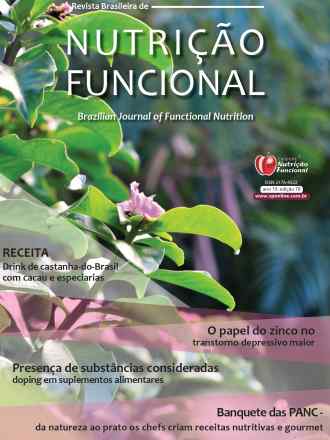Zonulina e glúten
Revista Brasileira De Nutrição Funcional
Zonulina e glúten
Autor Correspondente: R. L. FETTER | [email protected]
Palavras-chave: Zonulina, junções intercelulares, glúten, gliadina, doença celÃaca, diabetes mellitus tipo 1, doenças autoimunes
Resumos Cadastrados
Resumo Português:
As junções intercelulares, também denominadas de "tight junctions"(TJ), são estruturas dinâmicas envolvidas no transporte de água e eletrólitos através do epitélio intestinal, sendo o principal determinante da permeabilidade intestinal Após a descoberta da toxina Zonula occludens (Zot), os pesquisadores hipotetizaram que ela poderia mimetizar o efeito de um regulador endógeno das TJs, o que resultou na identificação de um análogo intestinal da Zot, a que chamaram Zonulina (ZON). A ZON representa uma proteÃna eucariótica e o único mediador fisiológico, até o momento, capaz de abrir reversivelmente as TJs. Recentemente, algumas doenças autoimunes e inflamatórias têm sido relacionadas com alterações na permeabilidade intestinal. Uma das teorias atuais sobre autoimunidade envolve a integridade da mucosa intestinal (sistema das TJs), que pode estar comprometida em algumas situações,
permitindo a passagem de antÃgenos, e subsequente resposta imune deletéria que pode resultar na agressão a tecidos próprios, como, por exemplo, pele, intestino delgado, tireoide ou pâncreas. Dentre os diversos estÃmulos que podem provocar a liberação da ZON no lúmen intestinal, as bactérias e o glúten estão entre os mais potentes. A doença celÃaca (DC) e a diabetes mellitus tipo 1 (DM1) são doenças autoimunes que resultam de uma interação entre predisposição genética e fatores ambientais. Neste sentido, diversos estudos vêm estabelecendo uma relação entre ZON, integridade da barreira intestinal, glúten, DC, DM1, além de outras doenças autoimunes e inflamatórias, bem como neoplasias.
Resumo Inglês:
Intercellular junctions or "tight junctions" (TJ) are dynamic structures involved in the transport of water and electrolytes across the intestinal epithelium, and they are the main determinants of mucosal permeability. After the discovery of the Zonula occludens toxin (Zot), researchers have hypothesized that Zot may mimic the effect of an immunologically related, endogenous modulator of epithelial TJ, resulting in the identification of an intestinal Zot analogue - zonulin (ZON). ZON is a eukaryotic protein and the only physiologic mediator, known so far, able to reversibly open TJs. Recently, some
autoimmune and inflammatory diseases have been associated with changes in intestinal permeability. One of the current theories on autoimmunity involves the integrity of the intestinal mucosa (TJ system), which may be compromised in some situations, allowing the passage of antigens, and subsequent aggression to auto-antigens in various tissues, such as skin, small intestine, thyroid gland or pancreas. Among the various agents that may trigger the release of ZON in the intestinal lumen, bacteria and gluten are the most powerful. Celiac disease (CD) and type 1 diabetes mellitus (DM1) are autoimmune diseases resulting from an interaction between susceptible genes and environmental triggers. In this regard, several studies have established a relationship between ZON, intestinal barrier integrity, gluten, CD, DM1 and other autoimmune and inflammatory diseases, as well as cancer.

